Public transportation received $69 billion in subsidies in 2022, compared with $90 billion in subsidies to highways and $20 billion to airlines, according to data released by the Bureau of Transportation Statistics last week. These data include all government revenues and expenditures on these modes of travel, with the revenues broken out by “user-based” and non-user-based (meaning taxes or deficit spending).
(millions of dollars except passenger-miles in millions and Subsidies/PM in dollars)
| Mode | Revenue | Expenditure | Net | Passenger-Miles | Subsidy/PM |
|---|---|---|---|---|---|
| Transit | 11,188 | 80,527 | -69,338 | 30,082 | $2.300 |
| Highways | 161,299 | 251,777 | -90,478 | 4,708,270 | 0.019 |
| Air | 37,663 | 58,348 | -20,685 | 992,201 | 0.021 |
| Amtrak | 2,506 | 5,975 | -3,470 | 4,886 | 0.710 |
While these results are two years old, it takes awhile for data from many different sources to percolate through Department of Transportation channels. Since those sources include all state and local governments, collecting and verifying the data can be time consuming.
Eventually, the Bureau of Transportation Statistics will post all government user revenues by mode in table 3-32 and government expenditures in table 3-35 of National Transportation Statistics. But it hasn’t posted the 2022 numbers yet, so I calculated them from a spreadsheet posted by the agency (click “Export” then select a format and click “Download”).
The results for highways, airlines, and transit are in the above table, to which I have added Amtrak from its year-end monthly performance report. Passenger-miles can be found in National Transportation Statistics table 1-50, but for the most up-to-date data I went to the original sources: the National Transit Database for transit, table VM-1 of Highway Statistics for highways, and passenger data for airlines.
The airline data distinguish between domestic and international passenger-miles. To calculate total passenger-miles, I added domestic to half of international, figuring that the destination countries are probably providing half the subsidies to international flights. If you want to count only domestic passenger-miles, they totaled 707,125 million in 2022 and the subsidy per passenger-mile counting just those passenger-miles was 2.9¢.
Meanwhile, highways carry both passengers and freight. The Federal Highway Administration counts truck drivers as one passenger-mile per vehicle-mile, but I didn’t include these any more than I would count transit drivers or airline pilots among those modes’ passenger-miles. In the past, I’ve estimated that about 25 percent of the value of highway transport is attributable to freight, so only three-fourths of the subsidy to highways is attributable to passengers. I didn’t make this correction in the above table, but doing so would reduce the subsidy to 1.4¢ per passenger-mile.
These are quibbles. Counting just domestic travel, the airlines carried 145 times as many passenger-miles as Amtrak while highways carried 157 times as many passenger-miles as transit. As a result, though airlines received more total subsidies than Amtrak and highways received more total subsidies than transit, the airline and highway subsidies per passenger-mile are much less than Amtrak and transit subsidies.
Increasing ridership will reduce passenger-mile subsidies to airlines, Amtrak, and transit as those modes recovered from the pandemic in 2023 and 2024. But highways and airlines will remain the most efficient forms of travel in the U.S. by far.

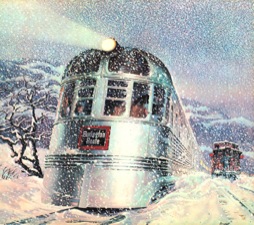
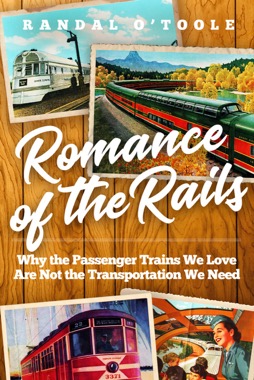

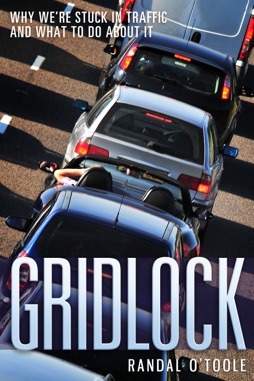
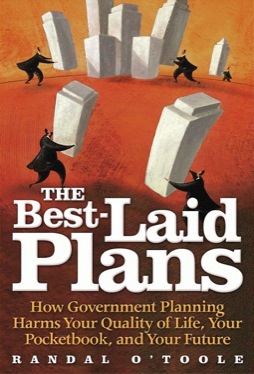
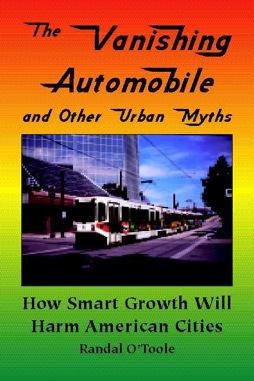
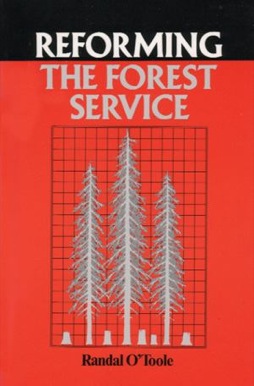
So … if I rode Amtrak from Cleveland to Chicago (roughly 350 miles and seven hours) the taxpayers would be kicking in about $245 and my ticket would cost me about $80. Flying (350 miles and about 90 minutes) would cost me about $350 on Southwest in addition to a federal subsidy of about $7.
Southwest has two flights per day and Amtrak one train per day.
I’m waiting for a member of Congress to justify the cost to the taxpayers.
The fires in California have prompted me to look for information on the Marshall fire here in Colorado several years ago. I stumbled across this website as a result of that search. I have felt for a long time that some amount of blame for the damage done by the Marshall fire should be attributed to the management of grasslands in that area. I have no evidence to support this idea except for observation of overgrown grassland in that area. I have always attributed some of the blame for the intensity of the fire to a perceived attitude in Boulder county against traditional farming and grazing methods. My contention is that if grazing had been allowed on the grassland or haying of the abundant grass that a lot of the fuel for the fire would have been nonexistent. I have been unable to track down any information regarding ownership of the grassland burned in the fire or what management guidelines were being followed at the time of the fire. Thank you.
The Fires out west aren’t “Management”, they’re mismanagement. They are nature; and nature burns to recycle.
Fire’s role in dryland ecology is known, documented, studied, and researched, It substitutes the role normally reserved by decomposers like bacteria and fungi predominantly in wetter ecosystems. In more humid and wetter environments rotifers/decomposers will break down wood/plant matter into soluble nutrients for plant uptake and Fungi harness/store them in water soluble format for subsequent later use. In xeric ecosystems this process is not as efficient due air having to lower humidity thus shallow decomposers do not proliferate well . So fire substitutes that role by charring material into water soluble ash.
Climate change is not responsible for these catastrophic fires; it’s California’s land use practices which have been problematic ever since late 1800s and personified in the movie “Chinatown”
For the last 120 years, the big cities and agriculture business have pulled water from Major rivers, Sierra Nevada mountains and sub surface wells and springs which have been tapped to accommodate domestic water consumption so LA County residents and suburbanites can have jungle plants in a xeric climate. They want tropical gardens for homes in Hollywood, Beverly Hills that requires Over 35+ inches of rain a year, Ecoregions of Southern California; they only get an average 11-12. In LA’s case they got 14 last year, above average rainfall.
Combine….
– A drastic reduction in the natural ground water due decades of well tapping without significant replenishment
– The replacement of native vegetation with weedy, waterhogging invasives (and sometimes oil rich plants like Eucalyptus)
– Suburban houses made of dried WOOD and lawns and gardens made of plants not suited for the environment and a hardscape that doesn’t support water retention.
It is a recipe for disaster. So the subsurface water has been depleted; Western US’s forests have lost significant ground water; soil moisture has heavily declined, so trees have to scrounge water where they can, becoming dry tinder in the summer. Logging wont stop fires since the usually leave behind small brush, leaves, needles, prescribed burns wont stop fires however they will mitigate them.
The solution mitigating Californias (as well as many Western) Wildfire problems (Not fixing, which it shouldn’t ecology of region fixed on this type of regeneration) but huge help deter catastrophic types of fires that burns hundreds of thousands of acres a year.
1: Install rainwater recharge pits. When a well is depleted or low productivity, it is often abandoned or they dig an adjacent well which may fail. Instead, the surrounding area around the well would be dug up and replace it with a surrounding pit of rock and gravel and filtering sand….. and channel rainwater to refill the well; a filter membrane of activated charcoal, Sterilized sand will suffice. Water from Agricultural runoff, treated water.
2: Despite the appearance of green, half or more landscape in suburban or inter-urban areas are in fact hardscape, thus impermeable. With hardscape water cannot penetrate and just runs off down street to storm drains, the LA River is just One large GUTTER more famous in movies for Car chases and post-Apocalypse scenes than storm water management. Los Angeles covers 469 square miles, so even an inch of rain produces 4 BILLION gallons most of which sweeps impervious surface, Making our hardscape semi-permeable. SLow it down, spread it out, soak it up.
https://www.youtube.com/watch?v=huO_NRn34GI
3: Rain Garden. Unlike traditional gardens which are often maintenence heavy and water thirsty; the Rain Garden is a planted depression often ignored infill; re-engineered soil medium to capture considerable portion of the rainfall that goes into it. The first were invented in Prince Georges County, Maryland in 1990 to mitigate cost of typical suburban/urban style drainage/gutter and stormwater diversion and years after first trial run in Somerset cut stormwater run off 75%.
LA get’s 14 inches of rain a year, 114 Billion gallons , enough to put out nearly any blaze.
4: Desalination: California hasn’t built a desalination plant in 10 years, but spent 11 Billion and growing on a train no one will ride.
Public transit got 69 Billion dollars, Noice.
Highways 90
But authentic break down…
According to the U.S. Department of Transportation (DOT) Federal Highway Administration, public highways are about 4.2 Million miles. Meaning every Mile of highway got 21,000 dollars , with average highway carrying a average of 60,000 vehicles a day for 365 days a year or 0.009 cents per annual driver.
Transit got 69 Billion; to carry less 0.5% annual passenger miles; with about 2.5 Million average habitual riders. Trains are inflexible/expensive to maintain. BART in San Francisco only has 50 stations; That serve a geographic stretch of barely 20% Bay Area, with 169K riders. Took 50 years; HUGE $$$ losses; is in shit condition despite federal funds and the new trains they just installed already malfunction. Meanwhile the same SF has 3,000 Bus stations for 500K riders. San Francisco Municipal Transportation Agency (SFMTA) is facing a budget deficit for its bus system, Muni, of over $300 million starting in July 2026. Moving 500K people a day on a budget of 300 million is a 1.64 per rider. BART least used lines need to be shut down.
Now that all the single family homes are burned down, Janehaveism can breathe a sigh of relief and whack off to his Jane Jacobs books.
” OH GOD, Six story brick buildings with no elevators.. Triplex flats with…FFFF NO BACK YARDS….. AHH, AHHHH AHHHHHH”